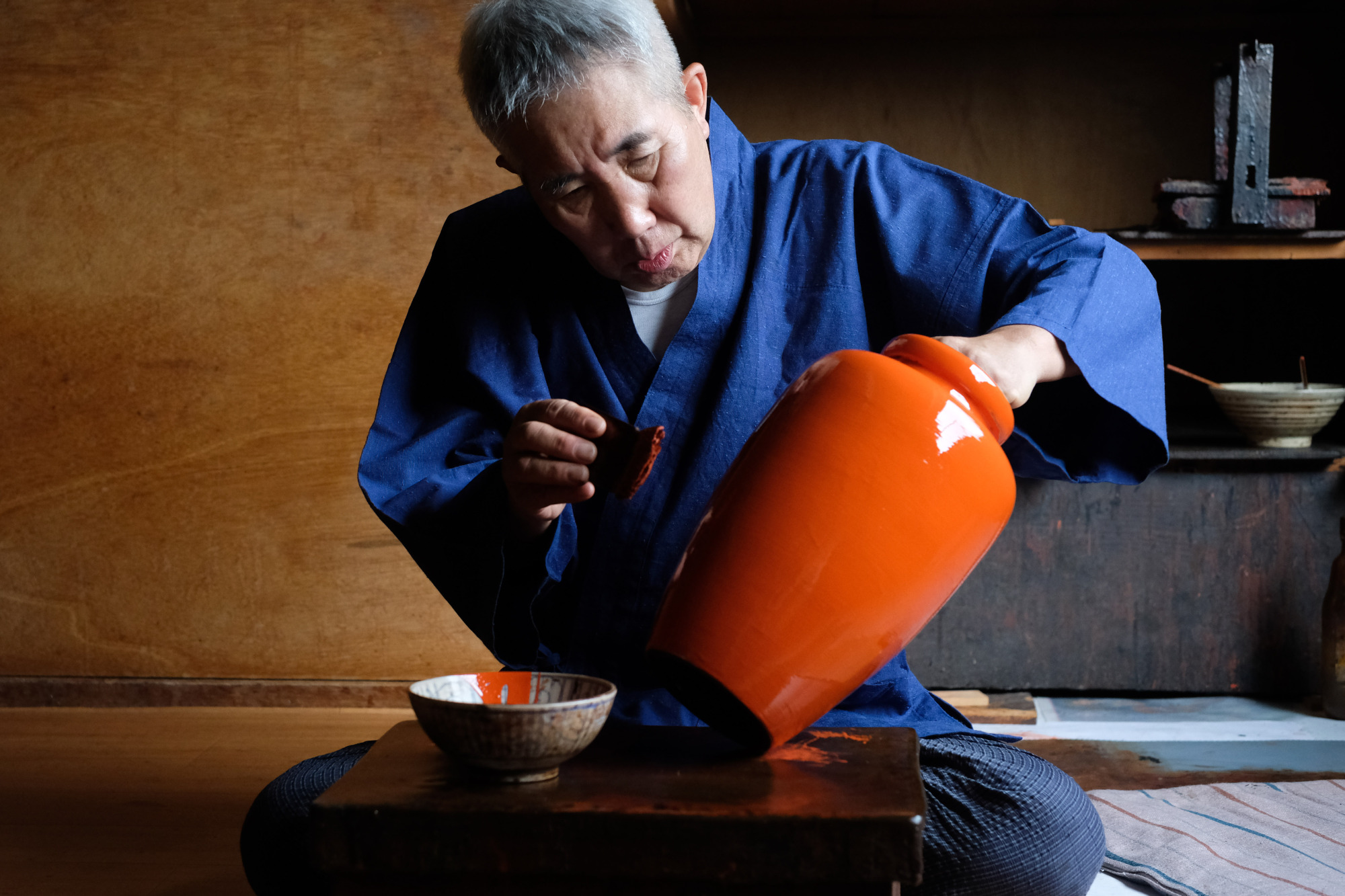In the window-lit corner of his family studio, Toshifumi Tanioka kneels, pouring thick orange lacquer into a bowl covered by white sheets of thin yoshinogami washi paper. Lifting the washi, he twists the ends, transforming the filter paper into a glistening orange cocoon. As the lacquer seeps through, a brilliant vermillion thread fills the bowl beneath — a single, beautiful step in the centuries-old technique used to make Kishu lacquerware, produced in Kuroe, Wakayama Prefecture.
Along with Aizu region in Fukushima Prefecture and Yamanaka (now part of Kaga) and Wajima in Ishikawa Prefecture, Kuroe is considered one of Japan's great lacquerware producing regions. During the Muromachi Period (1392-1573), woodworkers began moving to Kuroe to make shibuji-wan (bowls with a base coat of persimmon juice and lampblack) from the plentiful hinoki (Japanese cypress) in what was then known as the Kishu Domain.
In the 16th century, artisans from Negoro-ji Temple in Iwade fled warlord Toyotomi Hideyoshi's armies, taking with them the skills to make lacquered tables, trays, cabinets and more. Over the years, highly skilled artisans would continue to be drawn to Wakayama, further improving techniques.



